In mid September (2010) I had the distinct privilege of visiting Darrell Probst's hybrid fields, but I'm not talking about Epimedium here, this time around it was to walk a field of 5000 hybrid Coreopsis seedlings. The seedling field represents 10 years of hybridization efforts in hardy Coreopsis. The key phrase here is hardy Coreopsis, as many of the recent hybrids that have flooded the market, such as 'Sweet Dreams', 'Limerock Ruby', are crosses made with annual C. tinctoria, resulting in plants that are just not reliably hardy in USDA Zone 5. The lack of hardiness and performance on a number of Coreopsis hybrids has left many gardeners jaded (myself included), and wary of trying more because of their unreliability.
In contrast, Darrell searched out and found many our our USA hardy Coreopsis species that were not in cultivation, to add to his hybridization efforts. And of course, he also utilized the familiar Coreopsis rosea (native to Massachusetts), which has been used in Coreopsis breeding before, but remains an exceedingly difficult species with which to make successful interspecific crosses.
Driving to Darrell's field located in western Massachusetts, I tried to imagine what the hybrids would look like, but I was totally unprepared for the astonishing range of hybrids he managed to come up with. Walking the long rows upon rows of amazing hybrids was like being in a living science laboratory, with all of the lessons of botany, genetics, and hybridization just sitting there within the plants looking up at me, it has been a long time since I've been so inspired. Visiting the field was educational in so many ways, here are a few observations:
1. It takes vision, great tenacity, and years of determination to get worthwhile results.
2. It requires gathering and exploring as wide a gene pool as possible, to truly explore the possibilities.
3. It requires LOTS & LOTS of space and thousands of seedlings yearly, to achieve sufficient diversity (and nuances within that diversity), to be able to pick out the best of the best.
4. Incredible effort and expense goes into such seemingly simple endeavors.
Let me take you through a small photographic journey of Darrell's hardy Coreopsis trials. Some of his best groups of hybrids, such as the thread-leaf ones (verticillata group), I'm not at liberty to show (I can assure you they're amazing), but there's lots here to illustrate the process and achievements.
Comments
Re: A Coreopsis revolution
11-12 Two reds side by side, they could hardly be more different, a tall one, and the dwarf one
has some flashes of yellow.
13 A promising seedling where the red central zone has become a red flower with yellow tips.
14 Seedling with rose-red center and white tips, good dissected foliage.
15 a block of compact rock-garden sized seedlings.
16 a dwarf one with a different look, truncate maroon red coloring to the eye zone, different.
17 numerous light yellow and white flowered seedlings.
18-19 a couple different white selections
20 looking at these photos, just look at the neighbors... the foliage types, from simple
undivided, to sparsely lobed, to deeply lobed, all the way to highly dissected all sit
side by side. What you're not seeing in my photos, is the full breadth of diversity. One
interesting group are the ones with quilled blooms (tubular petals) already represented by
the hybrid named 'Jethro Tull'. Darrell has many such hybrids that are great improvements
on the theme. Shown is a compact quill-flowered type.
Re: A Coreopsis revolution
21-22 Photos showing plant size, leaf, and flower diversity, almost any combination is possible.
23-24 Some hybrids do a pretty good imitation of other genera, these look like Marigolds to me
25 variability! Red, yellow, white, dwarf white with red center lines.
26 variability! Extra long yellow petals, diffuse red ring. Tight rotund flower behind it.
27 Enormous golden flowers on a compact plant.
28-30 Darrell is also hybridizing some annual types for possible annual seed clones. There were
some real stunners in here, but I include just a few pics.
Even with 30 photos posted, I don't feel that I've done justice to the wealth of genetic diversity in evidence during my visit to this remarkable field. I hope that in a few years, some of the really diminutive types become selected and named for the rock gardening world, even if they're not of interest to the "perennials industry" wanting more substantially sized plants (Darrell assured me he has flagged some of the "little guys" for his fellow rock gardening friends).
Long live Tickseeds!
Re: A Coreopsis revolution
AMAZING ... the endeavor, foresight and economic outlay must be simply staggering ... but the progeny are hardy, incredibly diverse and extremely beautiful. Work like this must place hybridizers such as Darrell alongside the great plant hunters within the panoply of horticultural regard?
Re: A Coreopsis revolution
And I who never have succeeded with any Coreopsis! Very impressing. If some of those cultivars ever find their way here I certainly have to try again.
Re: A Coreopsis revolution
And "they" once claimed that cultivars like Sweet Dreams were hardy here in zone 4, too. I really hadn't thought much about coreopsis for many, many years. Thanks Mark!
Re: A Coreopsis revolution
Interesting. I recall Darrell mentioning in a past catalogue that he was going to be concentrating on other plants. I knew about the astilbes, but this is indeed a totally different direction. Some fascinating plants there!

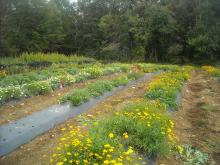
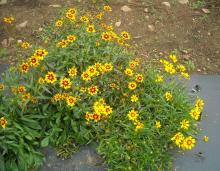
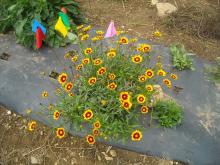
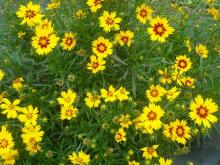
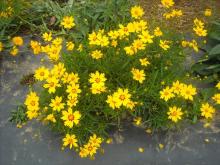
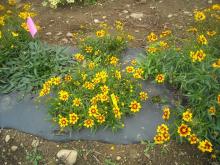
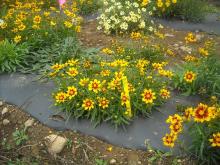
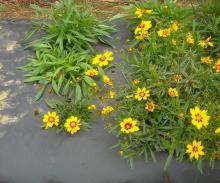
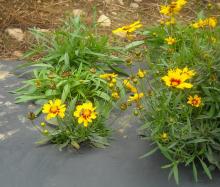
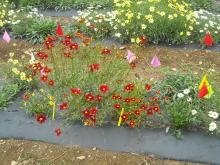
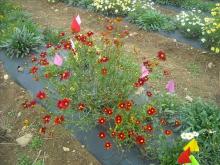
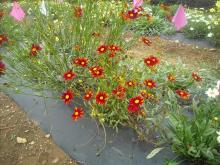
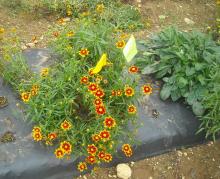
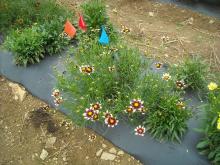
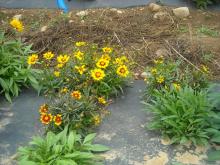
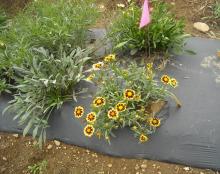
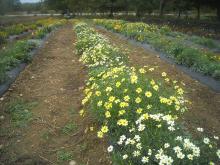
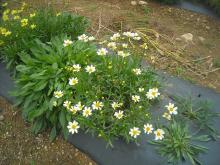
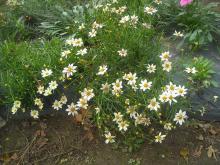
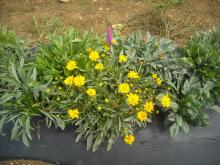
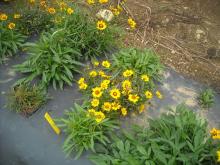
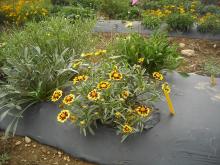
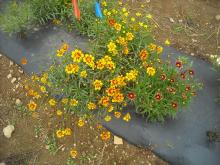
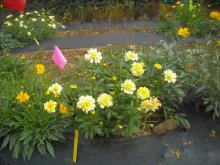
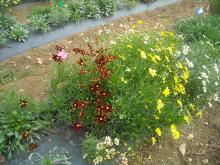
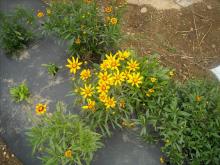
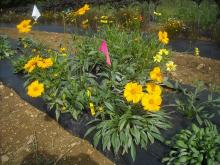
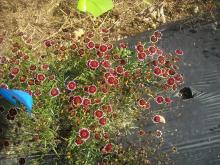
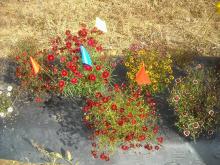
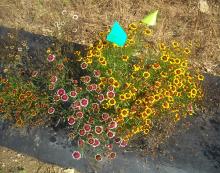
Darrell Probst uses hired resources to grow on his seedlings and create plugs ready for planting, then uses the farm (owner of the fields) to quasi-mechanically plant out his plugs in long rows 3 plants wide, inserted into holes in plastic weed barrier. All the flowering plants shown here, in full flower in September, represent the first year of growth, Coreopsis are quick growers! All plants grown are reviewed by Darrell of course, but other invited parties as well, and flagged (literally) to indicate selected plants. Anything that gets selected is then propagated by cuttings and trial-grown, all seedling plants get plowed under to start the hybrid process afresh next spring.
1. view of the fields near the end (these are L-O-N-G rows).
2. view of red-centered types. There are already some of these on the market, but in the
next series of photos, you'll see there is still lots of diversity.
3. A selected plant, with very rotate flowers, strong red eye zone, floriferous, good habit
4. two variants of a theme, red centers to yellow flowers, but very different
5. really nice compact yellow and red-eye type, with the pronounced 8-petal effect, with 4
lobes to each petal, I really like these types. Passed up by those who reviewed the plants.
6. fantastic to see plants side by side, in the center is a really terrific dwarf type compared
to taller siblings around. The one behind it is even smaller.
7. same view as #6 above, but in the background we see a lovely dwarf cream hybrid.
8-9 side by side, two similar colored seedlings, but the one on the left is really dwarf!
10 oooh, some red ones!